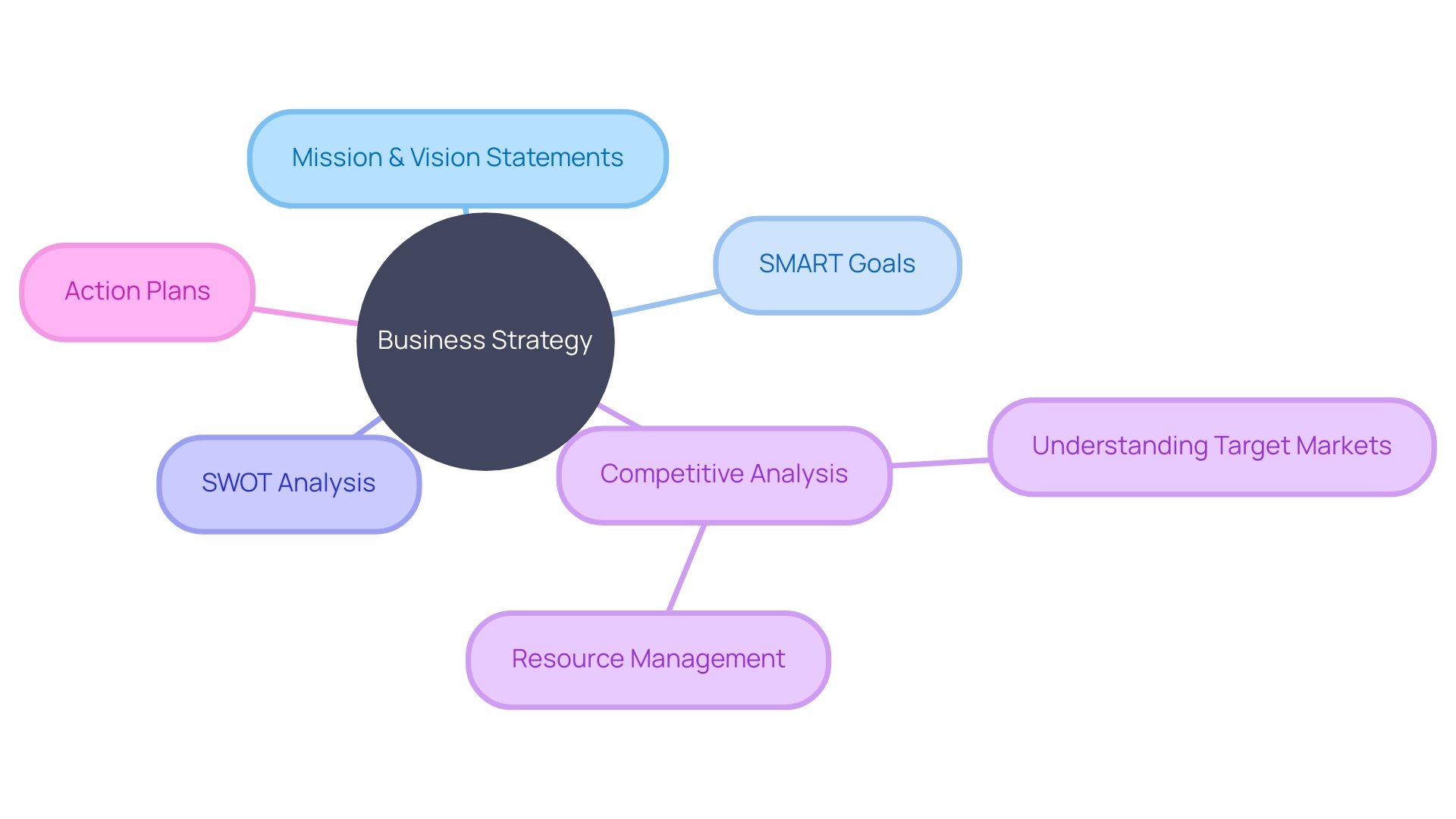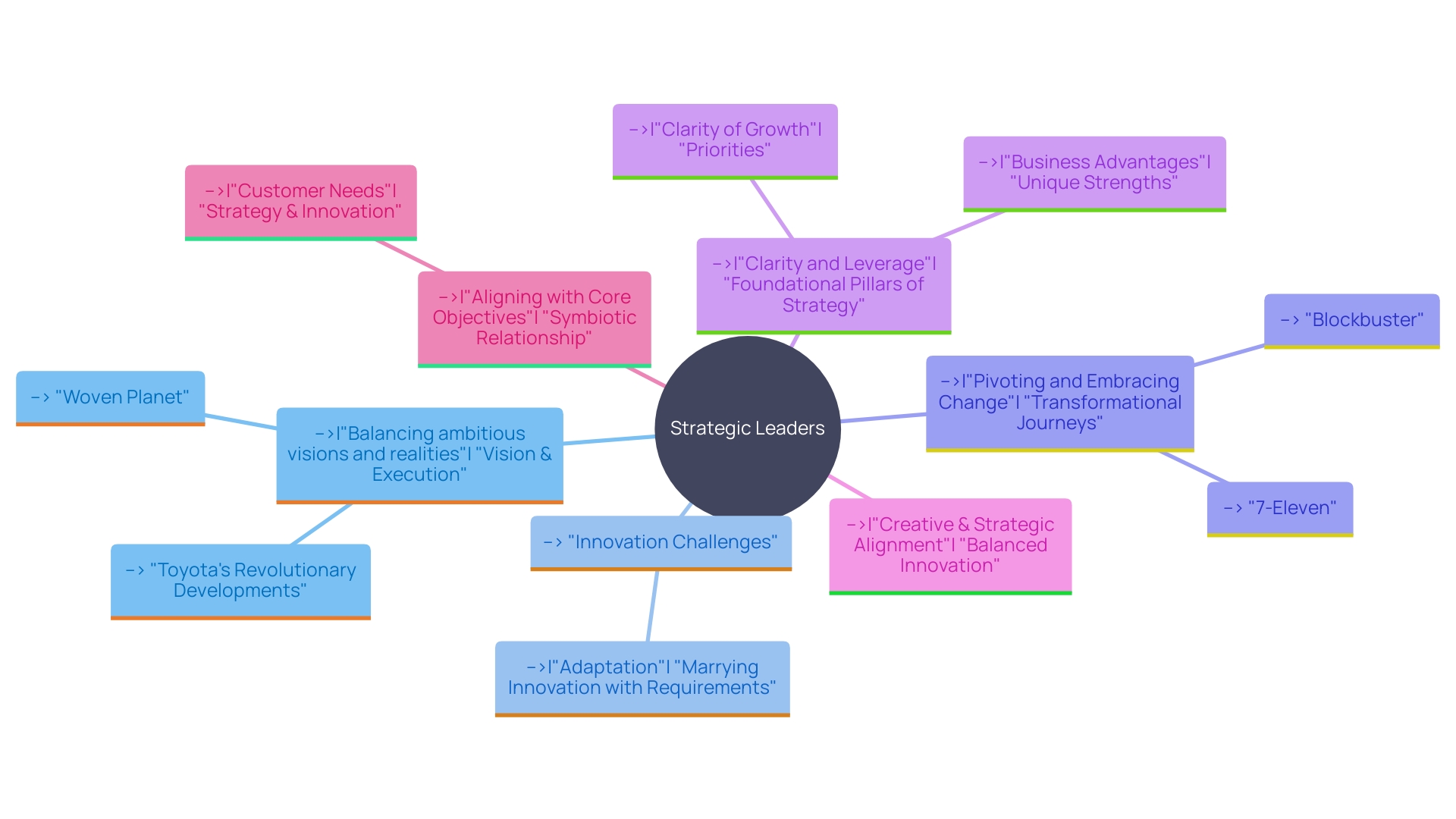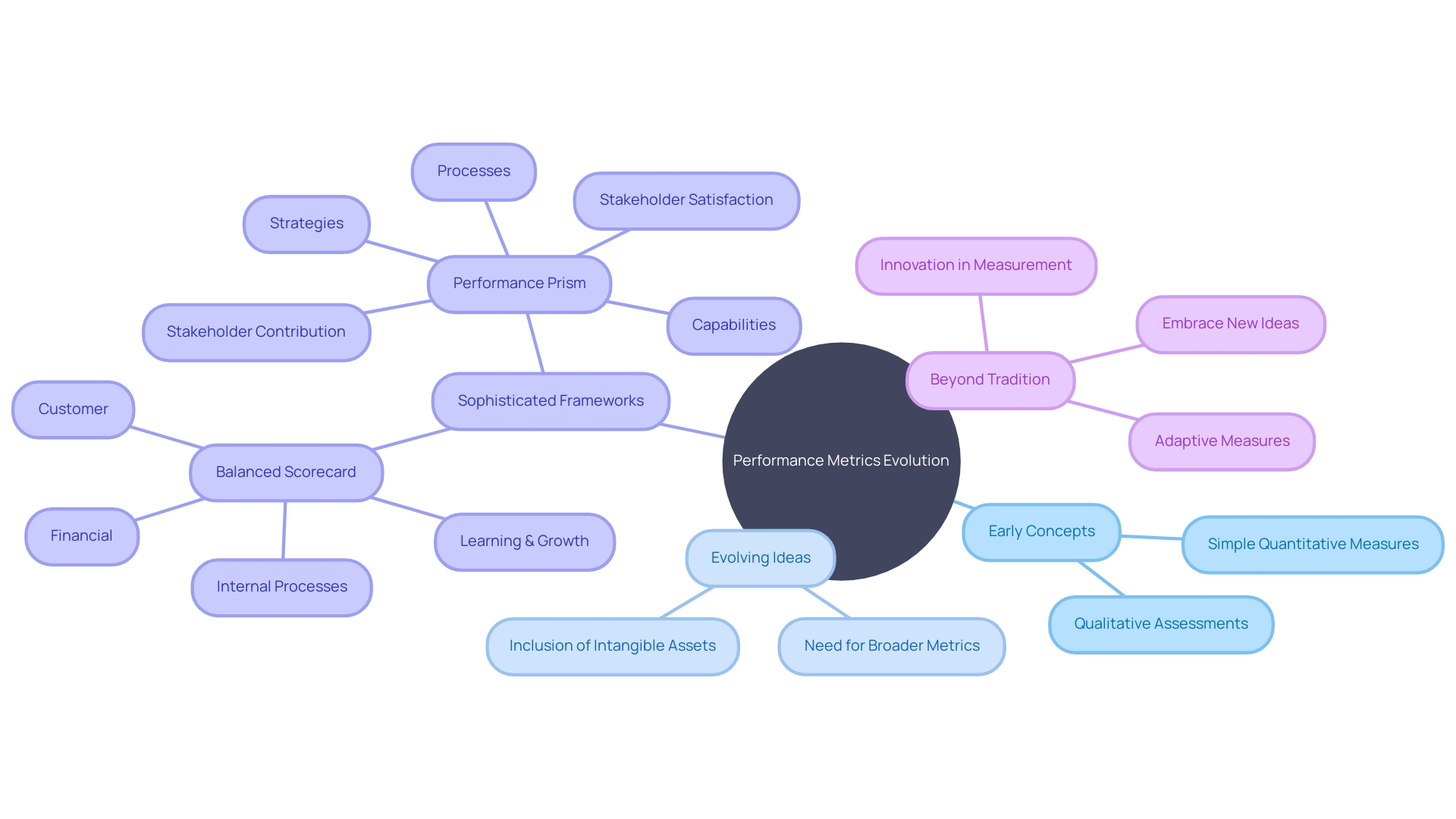Introduction
Building a prosperous enterprise requires effective business strategies that align with market dynamics, consumer needs, and competitive landscape. In this article, we will explore the importance of strategic implementation, customer engagement, and long-term viability.
We will also delve into key elements of a successful business strategy, the role of leadership in strategy success, the impact of market research, and the significance of performance metrics. Additionally, we will discuss overcoming common challenges in strategy implementation and best practices for continuous improvement. Join us as we provide practical advice and insights to help CFOs navigate the complex world of business strategy and drive their organizations towards sustainable growth.
Understanding the Importance of Effective Business Strategies
Building a prosperous enterprise hinges on defining and adhering to a cogent strategy which aligns with market dynamics, consumer needs, competitive landscape, and an organization's innate strengths. Foremost in this strategic approach is the implementation of Key Performance Indicators (KPIs), endorsed by management expert Peter Drucker with his axiom, "What gets measured gets managed".
By pinpointing and judiciously observing pivotal metrics, a business can gain acute insights into its operational efficiency, fiscal health, and customer contentment, thereby facilitating informed decision-making and efficient resource allocation. Moreover, encapsulating the essence of business, creating and retaining customers forms the crux of enterprise success, as profit generation is not the solitary aim of a business's existence.
Astutely investing time, effort, and capital in customer engagement and satisfaction can constitute half of a business's undertakings, propelling the retention rate. Success in business transcends mere revenue augmentation or market share expansion.
It embodies the establishment of a legacy, forging a resonant brand, and shaping a venture that perpetually reimagines its aspirations. Achieving such a state demands a rigorous pursuit of excellence, continual innovation, and unwavering dedication to enriching the lives of customers, employees, and the community.
Companies dedicated to such principles evolve into industry trendsetters and influencers. Valuing a business also necessitates pondering its end game. It's a strategic decision that affects the selection of investments to the distribution of profits. While profitability remains an important metric, the ultimate objective is to bolster the enterprise's overall value. This approach must be ingrained in every aspect of corporate finance, especially for growth-oriented businesses that willingly sacrifice immediate profits for future growth and scalability. Adopting strategies that prioritize long-term prosperity alongside immediate gain is paramount, such as emphasizing customer retention—a cost-effective mechanism known to enhance long-term viability.

Key Elements of a Successful Business Strategy
To sculpt a robust business strategy, begin by delving into the core values underpinning your organization. A well-articulated mission statement fosters daily focus for the coming years, while a vision statement paints the aspirational future, potentially a decade out. Forging such strategic pillars demands a thoughtful blend of creativity and certainty—an assurance to stakeholders that the company's resolve is both pioneering and enduring.
Defining SMART (specific, measurable, achievable, relevant, time-bound) goals and objectives is critical in charting a path to success. These targets must reflect the company's unique position and ambitions to stand out from the competitive fray. In this regard, a detailed SWOT analysis is indispensable, providing insightful revelations into a company's inherent strengths and areas for improvement, as well as scouting out the external prospects and potential hazards.
A deep dive into the competitive arena is paramount. An incisive competitive analysis equips businesses to pinpoint advantageous distinctions and adapt strategies accordingly. Thorough knowledge of your target market, their predilections, and behavioral trends is equally vital, emphasizing the importance of a strategy tailored to the customer's value.
Strategic maneuvers are futile without judicious resource management. Aligning financial, human, and technological assets with the overarching strategy is the linchpin of efficacy and progress. Finally, the translation of strategy into reality hinges on meticulous action plans.
These must delineate the tactical steps, delegate responsibilities, spell out schedules, and establish clear performance indicators to steer the organization towards its intended outcomes. Business strategy is the cornerstone of corporate success, a sentiment echoed by experts who assert that strategic layers multiply with the growth of diversified companies. Staying abreast of evolving market contexts and deploying a sequence of strategic paths, such as optimizing sales and penetrating customer bases, is vital for enduring prosperity, much like Toyota's nuanced approach to software development in the automotive arena.

The Role of Leadership in Business Strategy Success
Leaders at the helm of strategy must blend inspiration with pragmatism. It is a delicate balance between setting ambitious visions, akin to Toyota's revolutionary developments in automotive software, and adapting to the realities of execution.
For instance, Toyota aspired to launch Woven Planet to transcend industry standards, envisioning a seamless integration of cars with technology-rich infrastructure. However, they encountered obstacles in marrying far-reaching innovation with the immediate, tangible aspects of vehicle software requirements.
Such examples underscore the indispensable role of strategic leaders who are adept at navigating the waters of innovation while tethering each initiative firmly to the business's strategic imperatives. The pursuit of stellar leadership is embodied by the tenacity to seize opportunities presented by change itself.
As illustrated by the transformational journeys of corporations like 7-Eleven and Blockbuster, a leader's capacity to pivot and metamorphize 'Change Equals Opportunity' into organizational doctrine can be the difference between flourishing and faltering. These dynamic shifts command a versatile breed of leadership acumen that not only cultivates innovation but also reinforces a culture of accountability—fueling a collaborative effort to propel the organization through the zones of change. Leaders must anchor innovation to the two foundational pillars of strategy: clarity of growth priorities and leveraging unique business advantages, as advocated in 'The Digital Transformation Roadmap.' This approach helps to balance the creative spirit of innovation with the structured path of strategic goals. By adopting such a mindset, leaders can inspire their teams to deliver innovative solutions that resonate with both customer needs and the enterprise's core objectives, thus ensuring a symbiotic relationship between strategy and innovation.

The Impact of Market Research on Business Strategy Development
Conducting market research is a fundamental aspect of crafting potent business strategies. Through primary research, organizations gather fresh, direct data - such as customer satisfaction levels and experiences with products or services - employing tools like surveys, which may be distributed via mail, phone, or online. These insights enable businesses to understand and anticipate customer needs, gauging the desirability of new offerings and the viability of entering new markets.
By engaging in exploratory research, which often involves open-ended interviews or focus groups, companies can unearth underlying motivations, pinpoint potential issues, and spot emerging trends. Descriptive research delves into these discovered areas to define audience characteristics, measure market dimensions, and analyze industry trends through surveys and observational studies. This can be differentiated from secondary research that deepens the understanding gained from these initial data points, processing the collected information to construct competitive pricing strategies and assess supplier relationships.
The fusion of such varied methodologies leads to a holistic grasp of market dynamics. The effective integration of AI in this process fleshes out the utility of secondary data, ensuring that businesses make confident, data-driven decisions. Efficiency can be measured through metrics like survey completion rates, which reflect the relevance and engagement of the survey questions, ultimately supporting the integrity and usefulness of the research outcomes.
The Significance of Performance Metrics in Business Strategy Evaluation
The landscape of performance metrics has evolved dramatically, from the early conceptual ideals of measuring and quantifying business performance (Ridgway, 1956; Argyris, 1952) to sophisticated frameworks like the Balanced Scorecard (Kaplan and Norton, 1992) and the Performance Prism (Neely, 2001; Neely et al., 2002). These innovative tools have been pivotal for businesses that strive to understand not only financial performance but also customer satisfaction, operational efficiency, and market positioning. As the academic community continues to expand and refine these concepts, the concern about dependency on classic frameworks persists, with calls for the investigation of untapped ideas and the development of dynamic systems that reflect both tangible and intangible assets (Neely, 2005).
This ongoing inquiry is essential for businesses aiming to transcend traditional measurement methods, ensuring they remain agile and responsive to an ever-changing marketplace. With a focus on 'practical implementation' as the latest phase of this field's evolution, organizations are encouraged to leverage the vast body of knowledge available to create robust, adaptable performance measurement systems. Despite seven decades of study and a multitude of research questions (from 2005 to 2020), the challenge still exists to move beyond trusted methodologies and to breathe new life into performance metrics that resonate with contemporary business challenges and digital transformations.

Overcoming Common Challenges in Business Strategy Implementation
To navigate the complex terrain of business strategy implementation amidst resistance, resource scarcity, and unforeseen external disruptions, companies must take a proactive approach. Paramount to this is seamless communication.
Articulating the strategy's purpose, anticipated advantages, and individual roles paves the way for broader acceptance and a unified effort towards the collective goal. Additionally, forming a dynamic team endowed with the requisite skills and decisiveness can serve as the linchpin for successful execution.
A cardinal practice is the paradigm of continuous transformation, which replaces the traditional 'unfreeze-change-refreeze' model. As psychologist Kurt Lewin's theory may not align well with modern, ever-changing business dynamics, fostering a culture of continual evolution, critical reflection, and innovation is essential.
Walmart exemplifies this strategy by focusing on pervasive challenges such as improving customer experience and optimizing business operations. Moreover, the integration of innovation and strategy is critical. By anchoring every innovation to strategic growth priorities and the company's distinct benefits, firms like those advised by a digital strategy expert can harness their core strengths to spawn innovations that concretely enhance bottom-line performance. Regular monitoring and adapting to feedback and performance indicators are also fundamental to maintaining momentum and addressing any emerging issues. If navigating these complexities proves daunting, external expertise should be solicited to provide fresh perspectives and specialized insights that align with current strategies and anticipated market trends.

Best Practices for Continuous Improvement in Business Strategies
Leveraging continuous improvement is pivotal for the sustainability and competitive edge of any strategic business approach. Here are transformative practices to consider:
- Strategic Ideation and Review: Engage continually in ideation, recognizing that the initial ideas may not be the most effective.
It's through the iterative analysis of performance metrics, stakeholder feedback, and market trends that powerful strategic insights emerge. - Learning and Development Focus: Cultivate a culture of learning where employees are inspired to expand their knowledge and skills.
This can be achieved by providing consistent training opportunities, promoting knowledge sharing, and emphasizing professional growth. - Agility in Business Evolution: In a landscape marked by frequent change, adopting agility and adaptability is non-negotiable.
Such dynamism accommodates swift adoption of emerging technologies and trends and ensures strategies evolve as required. - Informed Decision-Making: Prioritize decisions that are rooted in data and analytics over mere intuition.
Bolster your data analysis capabilities to empower your organization to make evidence-based decisions that drive success. - Collaborative Synergy: Encourage cohesive collaboration and cross-departmental alignment. Form cross-functional teams where knowledge is exchanged, fostering a holistic approach to strategic undertakings. In line with Brian Joiner’s insights, optimizing the organizational system holistically rather than focusing on its individual components enhances overall effectiveness. Addressing process-related inefficiencies allows businesses to maintain their trajectory towards sustainable growth and market relevance.
Conclusion
In conclusion, effective business strategies are essential for a prosperous enterprise. Strategic implementation, customer engagement, and long-term viability are key elements contributing to success.
Strategies should be based on KPIs to gain insights into operational efficiency, fiscal health, and customer satisfaction. Prioritizing customer engagement and retention is crucial for lasting success.
Successful business strategies involve defining core values, setting SMART goals, conducting a SWOT analysis, understanding the competitive landscape, and aligning resources. Strong leadership is vital for navigating innovation and inspiring teams to deliver customer-centric solutions.
Market research plays a pivotal role in developing strategies based on customer needs and market trends. Incorporating primary and secondary research methods provides a holistic understanding of market dynamics.
Performance metrics have evolved beyond financials to measure various aspects of success. Continuous improvement and adaptation are crucial in the rapidly changing business landscape. Overcoming challenges in strategy implementation requires seamless communication, dynamic teamwork, and a culture of continuous transformation. Regular monitoring and seeking external expertise help maintain momentum. In summary, CFOs must leverage these best practices to navigate the complexities of business strategy and drive sustainable growth in a dynamic marketplace.




